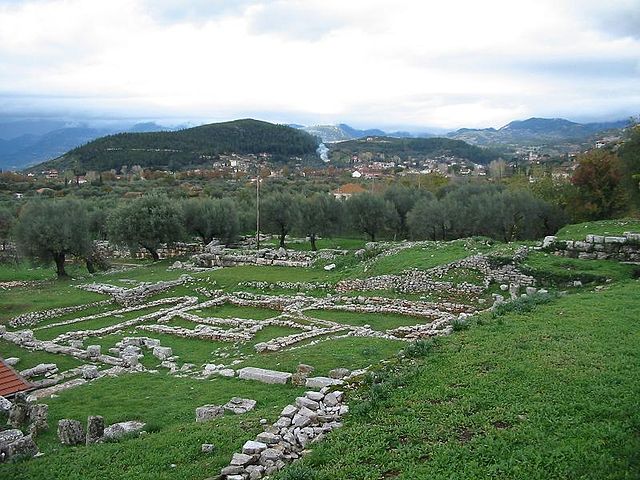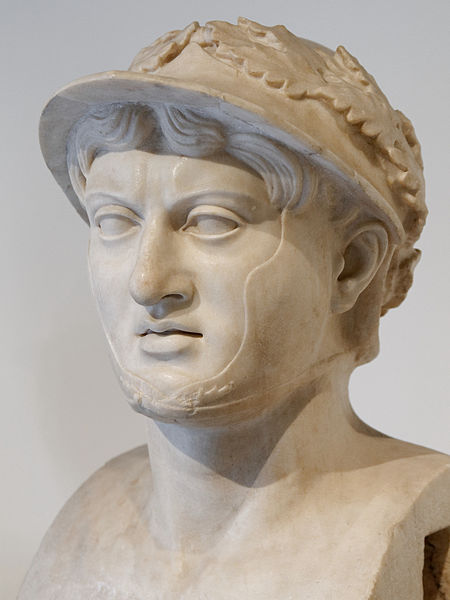Philip V was king of the ancient Greek kingdom of Macedon from 221 to 179 BC. Philip's reign was principally marked by the Social War in Greece and a struggle with the emerging power of the Roman Republic. He would lead Macedon against Rome in the First and Second Macedonian Wars. While he lost the latter, Philip later allied with Rome against Antiochus III in the Roman-Seleucid War. He died in 179 BC from illness after efforts to recover the military and economic condition of Macedonia and passed the throne onto his elder son, Perseus of Macedon.
Bust of Philip V inside the Palazzo Massimo, Rome.
Hellenistic bust of a man wearing a laurel wreath, possibly a depiction of Philip V of Macedon, copper alloy, circa 200 BC, originally from Macedonia, now located in the Virginia Museum of Fine Arts, Richmond
The ruins of Thermo capital of the Aetolian League, a town which was sacked by the army of Philip V.
Roman denarius of Lucius Marcius Philippus, minted circa 113 BC, with Philip V on the obverse, wearing the traditional helmet with goat's horns.
The Roman Republic was the era of classical Roman civilization beginning with the overthrow of the Roman Kingdom and ending in 27 BC with the establishment of the Roman Empire. During this period, Rome's control expanded from the city's immediate surroundings to hegemony over the entire Mediterranean world.
Roman Republic
The "Capitoline Brutus", a bust possibly depicting Lucius Junius Brutus, who led the revolt against Rome's last king and was a founder of the Republic.
Bust of Pyrrhus, found in the Villa of the Papyri at Herculaneum, now in the Naples Archaeological Museum.
Coin of Hiero II of Syracuse








